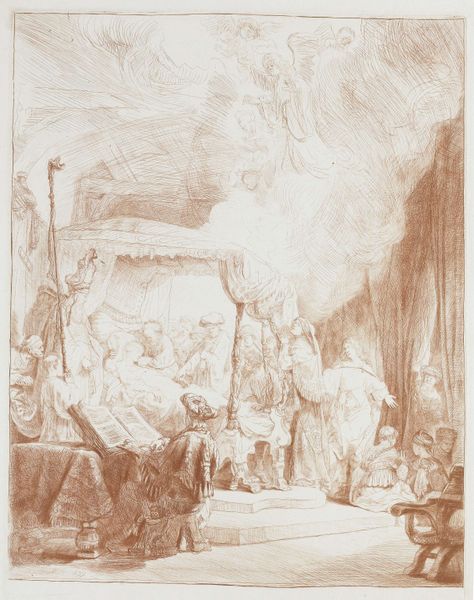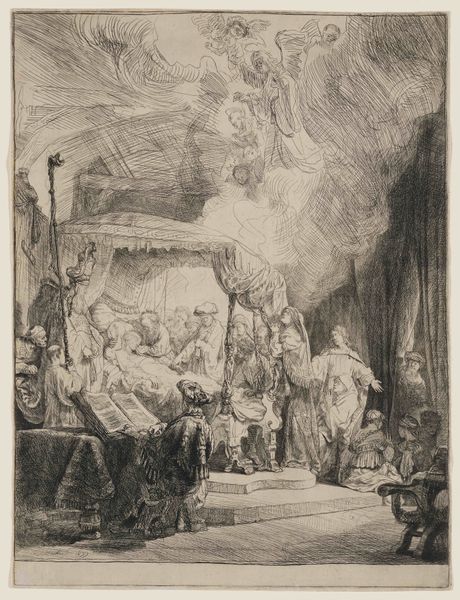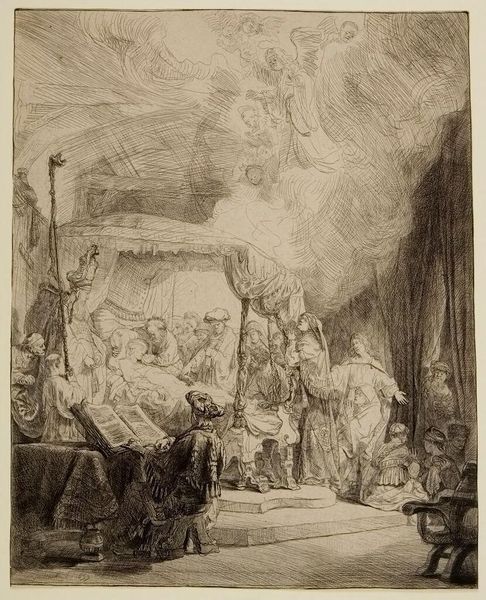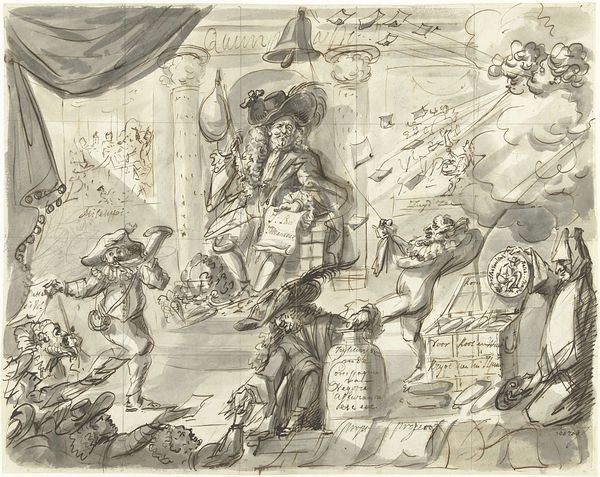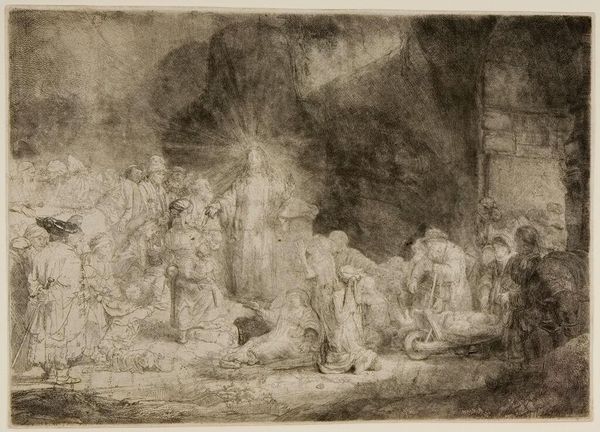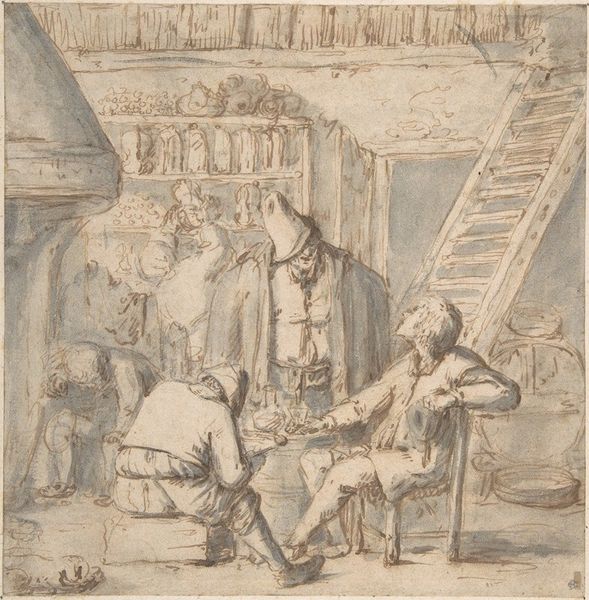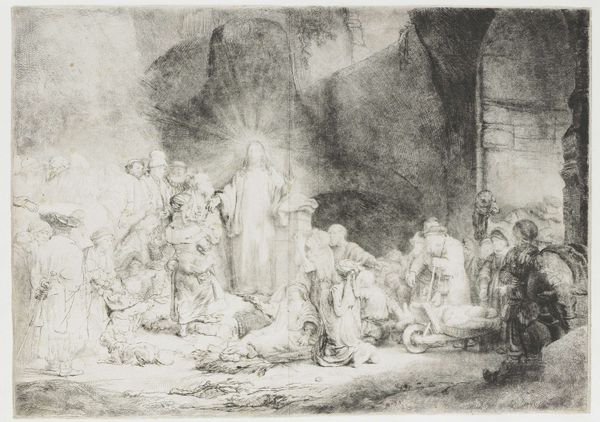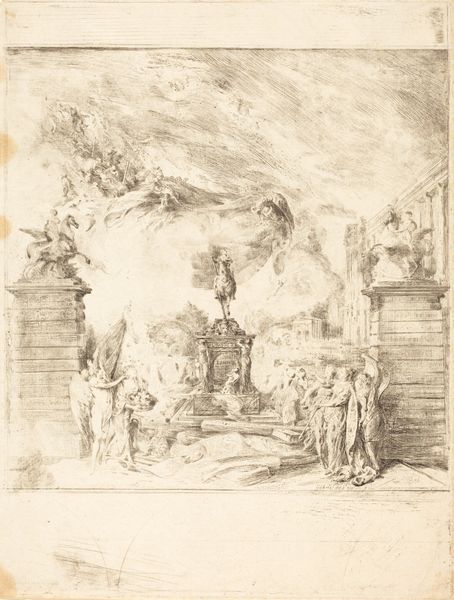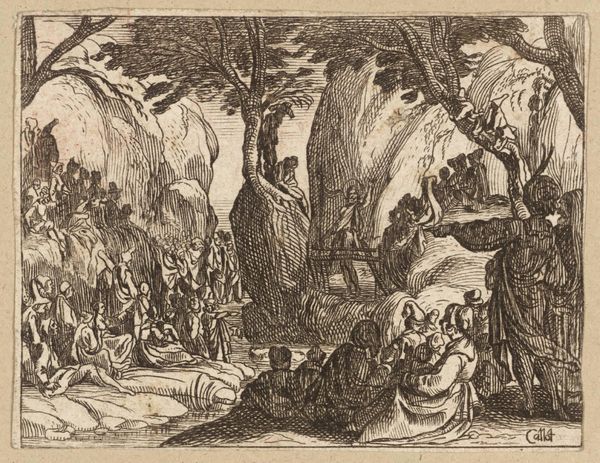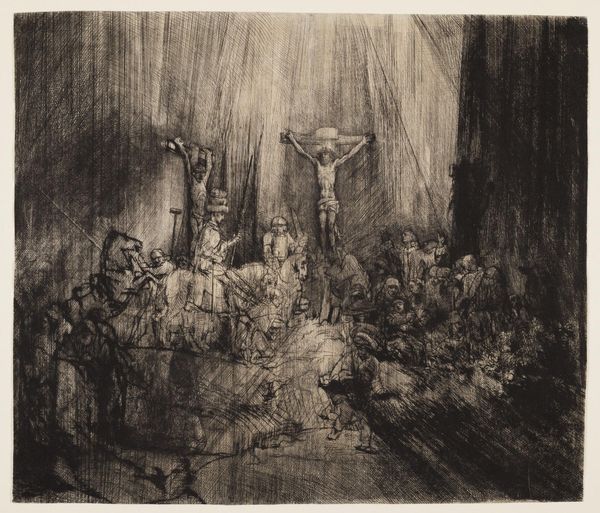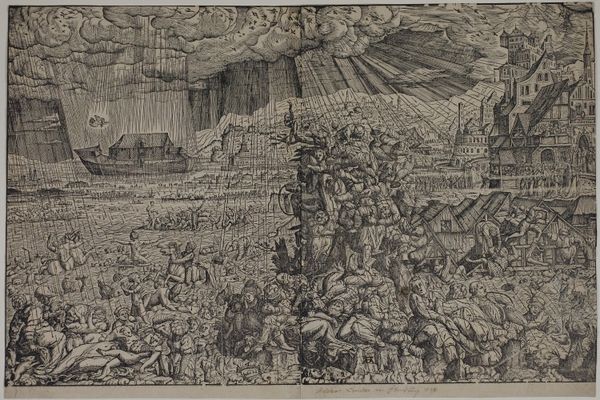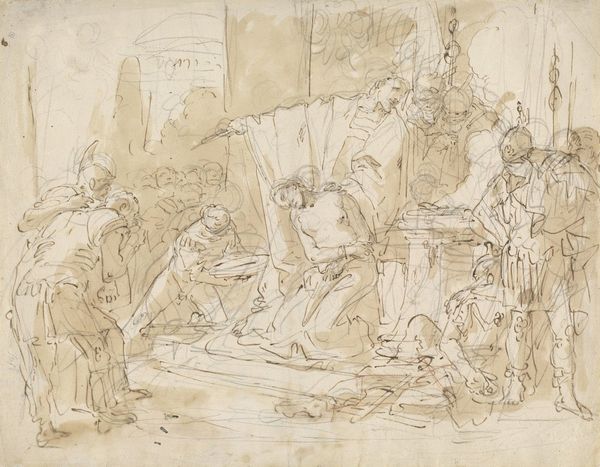
drawing, paper, pen, charcoal
#
drawing
#
narrative-art
#
baroque
#
dutch-golden-age
#
charcoal drawing
#
figuration
#
paper
#
pen
#
charcoal
#
history-painting
Copyright: Public Domain: Artvee
Curator: Rembrandt van Rijn's 1639 drawing, "Death of the Virgin," is a masterful study in pen, charcoal, and ink on paper. Its complex composition immediately suggests a rich visual narrative. Editor: The initial impact is almost dizzying; the eye struggles to find a stable focal point. The swirling lines above the Virgin's bed seem to both comfort and consume. Curator: Observe how Rembrandt manipulates light and shadow to articulate space and emotion. The Virgin lies almost ethereally beneath the heavily shadowed canopy, contrasted against the brighter figures surrounding her. The application of the medium in this manner directs the viewer's attention. Editor: Precisely! Consider the paper itself, likely a costly rag paper in its time. It would've offered the texture needed to hold layers of charcoal. And think of the labor! Each line painstakingly laid, cross-hatched to create depth. The materiality speaks of devotion, both Rembrandt's to his craft and the subjects' to their faith. Curator: One can read this composition as a reflection of Baroque artistic values; specifically, the drama, emotion, and dynamism, especially within Counter-Reformation ideals. This drawing employs tenebrism—heightened contrasts between light and dark—to generate intense feelings. Editor: It’s crucial to note, however, that Rembrandt, working in the Dutch Golden Age, also likely aimed this not just at religious elite but possibly the wealthy merchant class, hungry for art reflecting domestic piety and personal connections to Biblical scenes. How would its market have affected his stylistic and material choices? Curator: An insightful query. Returning to Rembrandt's deployment of space; he's created an intimate scene yet manages to render the setting as an ethereal and almost boundless space, perhaps signifying the Virgin’s ascension. The convergence of vertical lines rising up to the heavens seems intentional. Editor: Agreed. By exploring its material reality alongside its historical placement, we unravel an object made from skilled labour that transcends beyond just lines on a surface to become a significant mirror of an era and the social systems enmeshed within it. Curator: An artwork ripe for ongoing discourse, where semiotics intersect materiality and technique! Editor: Indeed. Reflecting further highlights how the object informs the subjective view of art historical interpretations.
Comments
No comments
Be the first to comment and join the conversation on the ultimate creative platform.

